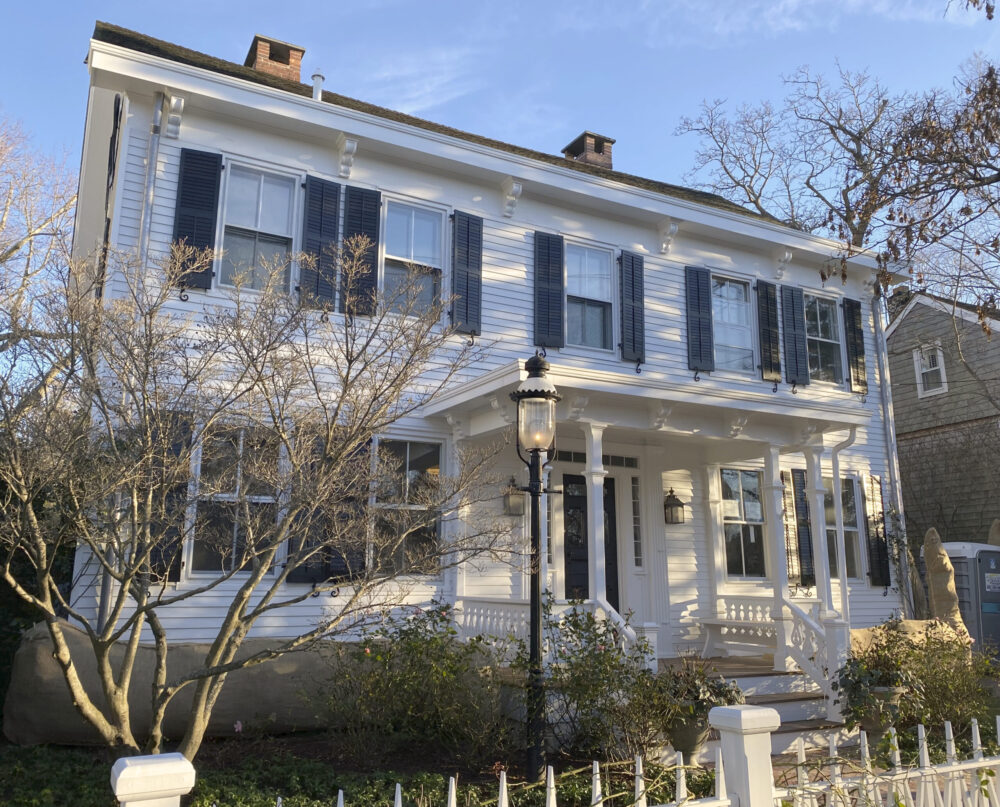
Sag Harbor Village’s Historic Preservation and Architectural Review Board voted unanimously on May 26 to reject the owner’s bid for permission to install custom-made Thermopane replica windows at 207 Main Street, ruling that replacing the 19th century windows “would substantially change the architectural character and features of a historic house and diminish its significance and value.”
In a long written decision that was read into the record by the panel’s attorney, Harry Fournaris, the board rejected attorney Dennis Downes’s argument that a denial would violate numerous precedents in which the board allowed new windows in old structures, including the American Hotel, the Bulova Watchcase Factory and the former Methodist Church, now The Church arts center.
The board rejected those examples, writing that they were not “contributing” single-family residences in the village’s historic district, as is 207 Main Street, and the number of windows and the cost of restoring them was not comparable. In the case of the Methodist Church, the original windows had been removed by a previous owner.
Among other examples Downes cited, one was an early 1900s bungalow and “not as significant as 207 Main Street”; another was a garage, not a house; another had already lost all its original window sashes; and one was not in the historic district or listed in the National Register as a landmark, as is 207 Main Street. Each example cited by Downes, the board agreed, has “very different facts from the 207 Main Street application.”
The board found it has “routinely” required preservation of historic windows, particularly in houses located in the historic district, and cited at least five examples.
The debate, which dates back to September 2021, when the application was filed, has had numerous wrinkles. The window replacement request was part of an overall renovation plan for the house, which dates from the late 18th century but was highly modified in the 19th century. The board approved other aspects of the renovation plan on January 13, including new doors in the back and dormers on the rear side of the roof.
Board members resisted the window replacements, noting that U.S. Department of the Interior standards for houses in historic districts require architectural elements to be preserved unless they are beyond repair.
After months tangling with the board, the architect for the applicant, Chris Coy, in late January abruptly announced that the applicant — listed as MULG 207 LLC on the application but referred to as the Lewis family by Downes — would agree, after all, to keep the old windows and use exterior storm windows to block the weather.
The sudden reversal led to a January 27 vote to approve that alternative. But then Coy returned to the board in February with another surprise — an entirely new application to replace the windows.
In its May 26 decision, the board noted that it had made its January decision in the matter after Coy had “admitted” that the windows were still functional “and not beyond repair,” the national standard for deciding whether or not windows in historic houses may be replaced.
“The applicant’s resubmission of the application seeking a different result from the same circumstances without changing the conditions or [making] a different request of the board is barred” by legal protocol “and must be denied,” the board ruled.
After Fournaris had read the draft resolution, all five board members voted in favor of adopting it.
When Chair Jeanne Kane first asked Fournaris to read the decision aloud, Downes, who was participating in the Zoom meeting by phone, asked when the board had decided to order its attorney to draft it. He called it a violation of the Open Meetings Law and a “railroad job.”
After the vote, he asked Kane if the decision meant his client couldn’t even repair the old windows. “Not at all,” she said, noting that repairs and the use of internal or external storm windows was allowed.
With no debate and little discussion, the board readily granted a second application for 207 Main Street to install a low railing on an existing flat-topped addition on the rear of the house for decorative purposes only. Coy originally presented the request as a railing around a “deck” with a new casement window instead of the existing, nearby double-hung dormer window to provide easier access.
When board members raised concerns about neighbors’ privacy and the legality of an occupied deck off the third floor, Coy dropped the plan to also install decking and a 4-foot railing. The maximum height of the decorative railing will be 24 inches.